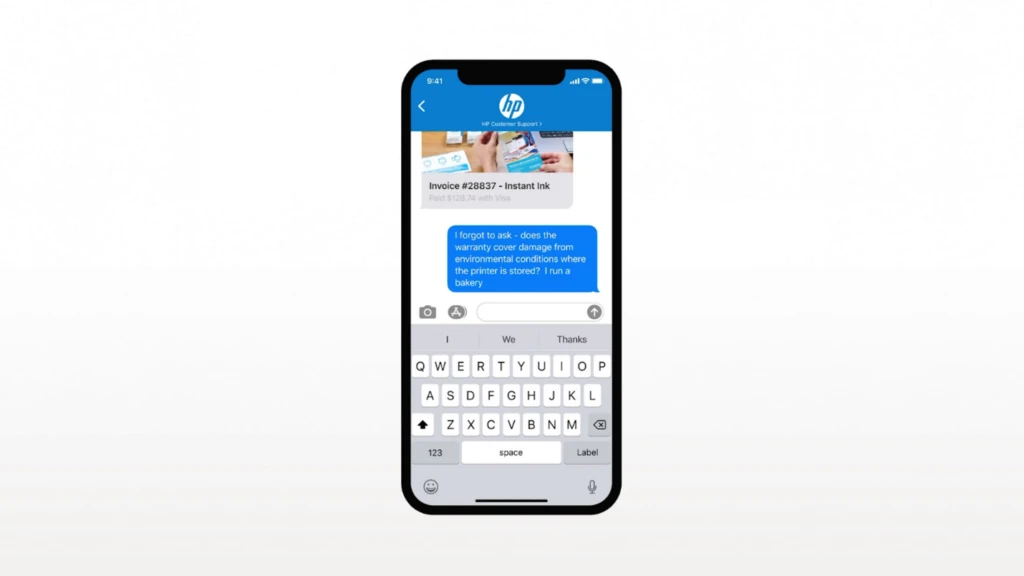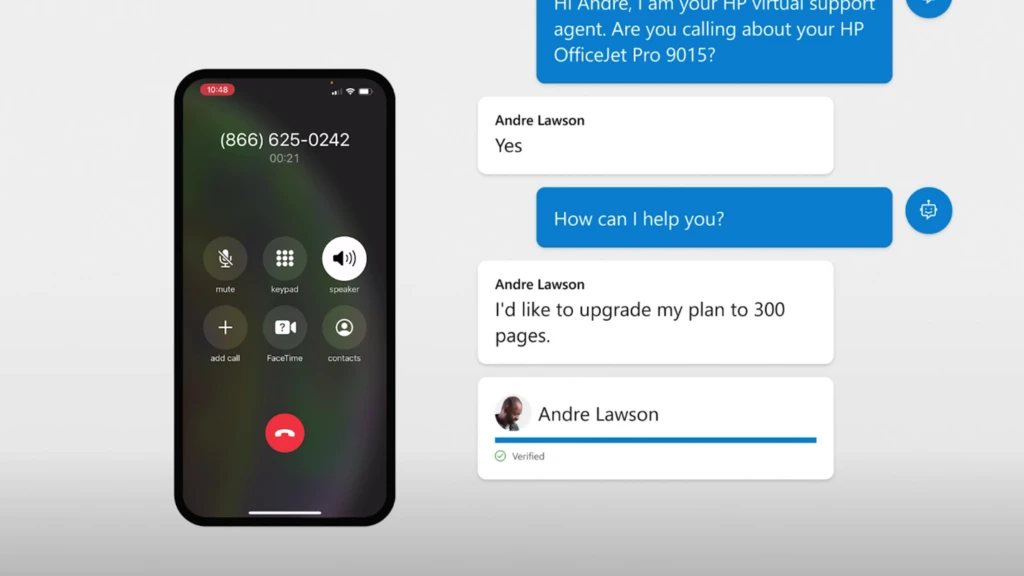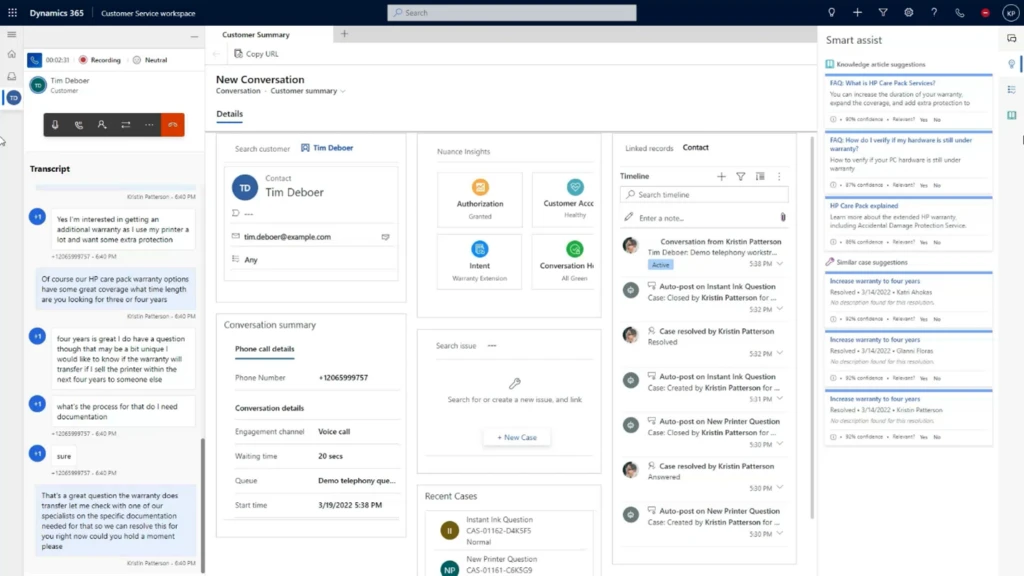4cd7efdb1a7ac8c4387c515a7b1925931beb212b95c4f9d8b716dbe18f54624f
Tags
remote-access-trojantrojan
Details
| Name |
ilasvc.exe |
| Size |
1056768 bytes |
| Type |
PE32+ executable (GUI) x86-64, for MS Windows |
| MD5 |
05d38bc82d362dd57190e3cb397f807d |
| SHA1 |
52b04d348adf7e42e7c7d6c2ec9aabbcaba07188 |
| SHA256 |
4cd7efdb1a7ac8c4387c515a7b1925931beb212b95c4f9d8b716dbe18f54624f |
| SHA512 |
d03894ad9ce7a5f0e58a5e6385926263507f2571e3cbe60fce1ed5463a77152a7779d8b494ee7a6ff4986de19c0a92cbcc8dae5697d69dc196c474723ee553ef |
| ssdeep |
24576:mStdBO8/kIH46+jHd3JURkxXH3rg9fNJa9y5xmDYzgLu8b7oCK:mST2+qXHbg91Ja9y5MOgL3K |
| Entropy |
7.599564 |
Antivirus
| ESET |
a variant of Win64/Injector.HA.gen trojan |
| IKARUS |
Trojan.Win64.Injector |
YARA Rules
- rule CISA_10382580_03 : loader
{
meta:
Author = “CISA Code & Media Analysis”
Incident = “10382580”
Date = “2022-05-02”
Last_Modified = “20220602_1200”
Actor = “n/a”
Category = “Loader”
Family = “n/a”
Description = “Detects loader samples”
MD5_1 = “3764a0f1762a294f662f3bf86bac776f”
SHA256_1 = “f7f7b059b6a7dbd75b30b685b148025a0d4ceceab405e553ca28cacdeae43fab”
MD5_2 = “21fa1a043460c14709ef425ce24da4fd”
SHA256_2 = “66966ceae7e3a8aace6c27183067d861f9d7267aed30473a95168c3fe19f2c16”
MD5_3 = “e9c2b8bd1583baf3493824bf7b3ec51e”
SHA256_3 = “7ea294d30903c0ab690bc02b64b20af0cfe66a168d4622e55dee4d6233783751”
MD5_4 = “de0d57bdc10fee1e1e16e225788bb8de”
SHA256_4 = “33b89b8915aaa59a3c9db23343e8c249b2db260b9b10e88593b6ff2fb5f71d2b”
MD5_5 = “9b071311ecd1a72bfd715e34dbd1bd77”
SHA256_5 = “3c2c835042a05f8d974d9b35b994bcf8d5a0ce19128ebb362804c2d0f3eb42c0”
MD5_6 = “05d38bc82d362dd57190e3cb397f807d”
SHA256_6 = “4cd7efdb1a7ac8c4387c515a7b1925931beb212b95c4f9d8b716dbe18f54624f”
strings:
$s0 = { B8 01 00 00 00 48 6B C0 00 C6 44 04 20 A8 B8 01 }
$s1 = { 00 00 48 6B C0 01 C6 44 04 20 9A B8 01 00 00 }
$s2 = { 48 6B C0 02 C6 44 04 20 93 B8 01 00 00 00 48 }
$s3 = { C0 03 C6 44 04 20 9B B8 01 00 00 00 48 6B C0 }
condition:
all of them
}
ssdeep Matches
No matches found.
PE Metadata
| Compile Date |
2020-04-30 19:43:57-04:00 |
| Import Hash |
99197f3296550481a848ea8d4e097487 |
| Company Name |
Sysinternals – www.sysinternals.com |
| File Description |
Flush cached data to disk. |
| Internal Name |
Sync |
| Legal Copyright |
Copyright (C) 2016 Mark Russinovich |
| Original Filename |
Sync.exe |
| Product Name |
Sysinternals Sync |
| Product Version |
2.2 |
PE Sections
| MD5 |
Name |
Raw Size |
Entropy |
| a917582fc3e796bb1d43bfce05c0cfb3 |
header |
1024 |
3.105665 |
| 5fbd29958a5484173910cb06dcfc4e9e |
.text |
310784 |
6.453454 |
| 34b6e6a847957ef90ef9460e0f8dd3d0 |
.rdata |
98304 |
5.168254 |
| e32c1166142d325350f6e6443db43144 |
.data |
3584 |
2.609738 |
| ffc4ab2046acad015eba98898e975ad5 |
.pdata |
18432 |
5.804487 |
| 502485fa11633b4eb9eaef15fcb482a5 |
.rsrc |
622080 |
7.975998 |
| 69687e4a3ffbefbe782d13637ce8605a |
.reloc |
2560 |
4.913641 |
Relationships
| 4cd7efdb1a… |
Connected_To |
151.106.30.120 |
Description
This malware is a 64-bit Windows loader that contains an embedded encrypted malicious executable. During runtime, this embedded executable is decrypted and loaded into memory, never touching the system’s hard disk. The encrypted executable is similar in functionality to the file 66966ceae7e3a8aace6c27183067d861f9d7267aed30473a95168c3fe19f2c16, described in report MAR-10382580.r1.v1. The malware embedded within this loader attempts to communicate with the hard-coded C2 Internet Protocol (IP) address 151[.]106[.]30[.]120. This malware provides a vast array of C2 capabilities including the ability to log keystrokes, upload and execute additional payloads, function as a proxy, and have graphical user interface (GUI) access over a target Windows system’s desktop. Many of the structures utilized to implement the C2 capabilities in this malware appear to be derived from the same source code as 66966ceae7e3a8aace6c27183067d861f9d7267aed30473a95168c3fe19f2c16, however this malware utilizes much more complex obfuscation to hinder the analysis of its code structures. This malware also utilizes a more complex encryption algorithm to secure its network communications.
The malware embedded within this binary utilizes a secure strings scheme based on a rotating XOR cipher (Figure 7). The strings are partially decrypted and listed below with their corresponding approximate memory address locations during runtime — assuming a base address of 0x260000.
–Begin Decoded Strings–
(‘0x264e32’, ‘RegQueryValueExl’)
(‘0x264f58’, ‘RegQueryValueEx’)
(‘0x265325’, ‘GetCurrentProcessId’)
(‘0x265bc9’, ‘GetEnvironmentVariableW’)
(‘0x265cc1’, ‘ShellExecuteExW’)
(‘0x268b20’, ‘GetAdaptersInfo’)
(‘0x268c49’, ‘GetAdaptersInfo’)
(‘0x26a77c’, ‘EnumDependentServicesW’)
(‘0x26a98b’, ‘EnumDependentServi’)
(‘0x26abb9’, ‘ControlService’)
(‘0x26ad5b’, ‘QueryServiceStatus’)
(‘0x26af62’, ‘CloseServiceHandle’)
(‘0x26c3ed’, ‘GetComputerNameW’)
(‘0x277621’, ‘GetEnvironmentVariableW’)
(‘0x27856f’, ‘GetLogicalDriveStringsW’)
(‘0x2788e5’, ‘GetVolumeInformationW’)
(‘0x278f87’, ‘FindFirstFileW’)
(‘0x27a3f3’, ‘GetSystemDirectoryW’)
(‘0x27bf04’, ‘SetFilePointerEx’)
(‘0x27d125’, ‘RemoveDirectoryW’)
(‘0x27daa7’, ‘FindFirstFileW’)
(‘0x284074’, ‘GetClipboardData’)
(‘0x2850d4’, ‘GetForegroundWindow’)
(‘0x28513d’, ‘GetDesktopWindow’)
(‘0x28b443’, ‘GetProcessHeap’)
(‘0x28b533’, ‘CoInitializeEx’)
(‘0x28b655’, ‘StartServiceCtrlDispatch’)
(‘0x28cd63’, ‘GetModuleFileNameW’)
(‘0x2636f3’, ‘UnkownError’)
(‘0x2649f3’, “Display”””)
(‘0x264ab0’, ‘RegOpenKeyExW’)
(‘0x264af0’, ‘ADVAPI32.dll’)
(‘0x264ca0’, ‘RegEnumKeyExW’)
(‘0x264ce0’, ‘ADVAPI32.dll’)
(‘0x264d80’, ‘RegOpenKeyExW’)
(‘0x264dc0’, ‘ADVAPI32.dll’)
(‘0x264e90’, ‘ADVAPI32.dll’)
(‘0x264fb0’, ‘ADVAPI32.dll’)
(‘0x265160’, ‘RegCloseKey’)
(‘0x2651b0’, ‘ADVAPI32.dll’)
(‘0x265390’, ‘KERNEL32.dll’)
(‘0x265c30’, ‘KERNEL32.dll’)
(‘0x265d20’, ‘SHELL32.dll’)
(‘0x266950’, ‘GetVersionExW’)
(‘0x266990’, ‘KERNEL32.dll’)
(‘0x266b63’, ‘CurrentMajorVersionNum’)
(‘0x266c33’, ‘CurrentMajorVersionNum’)
(‘0x268b80’, ‘IPHLPAPI.dll’)
(‘0x268c03’, ‘KERNEL32.dll’)
(‘0x268ca0’, ‘IPHLPAPI.dll’)
(‘0x26a710’, ‘GetTickCount’)
(‘0x26a750’, ‘KERNEL32.dll’)
(‘0x26a7b8’, ‘EnumDepende’)
(‘0x26a7f3’, ‘Advapi32.dll’)
(‘0x26a872’, ‘GetLastError’)
(‘0x26a8b0’, ‘KERNEL32.dll’)
(‘0x26a940’, ‘KERNEL32.dll’)
(‘0x26aa17’, ‘Advapi32.dll’)
(‘0x26aafb’, ‘OpenServiceW’)
(‘0x26ab4b’, ‘Advapi32.dll’)
(‘0x26ac33’, ‘Advapi32.dll’)
(‘0x26acd4’, ‘Sleep’)
(‘0x26ad24’, ‘KERNEL32.dll’)
(‘0x26adea’, ‘Advapi32.dll’)
(‘0x26aeaa’, ‘GetTickCount’)
(‘0x26af03’, ‘KERNEL32.dll’)
(‘0x26afdb’, ‘Advapi32.dll’)
(‘0x26c2e0’, ‘GetUserNameW’)
(‘0x26c320’, ‘Advapi32.dll’)
(‘0x26c450’, ‘KERNEL32.dll’)
(‘0x26cad0’, ‘KERNEL32.dll’)
(‘0x273220’, ‘closesocket’)
(‘0x274a90’, ‘getsockname’)
(‘0x275280’, ‘getsockname’)
(‘0x276583’, ‘Erroroccurswhiles’)
(‘0x276714’, ‘NoTabsinclient.’)
(‘0x2769e3’, ‘NoTabsinclient.’)
(‘0x276b60’, ‘KERNEL32.dll’)
(‘0x277690’, ‘KERNEL32.dll’)
(‘0x2785e0’, ‘KERNEL32.dll’)
(‘0x2786d3’, ‘ErroroccursinGetL’)
(‘0x278950’, ‘KERNEL32.dll’)
(‘0x2789e0’, ‘GetDriveTypeW’)
(‘0x278a20’, ‘KERNEL3’)
(‘0x278f10’, ‘PathCombineW’)
(‘0x278f50’, ‘SHLWAPI.dll’)
(‘0x278fa4’, ‘FindFirstFile’)
(‘0x278fe0’, ‘KERNEL32.dll’)
(‘0x279120’, ‘PathCombineW’)
(‘0x279160’, ‘SHLWAPI.dll’)
(‘0x2791c1’, ‘CreateFileW’)
(‘0x279200’, ‘KERNEL32.dll’)
(‘0x279280’, ‘GetFileTime’)
(‘0x2792c0’, ‘KERNEL32.dll’)
(‘0x279320’, ‘CloseHandle’)
(‘0x279360’, ‘KERNEL32.dll’)
(‘0x2796a0’, ‘FindNextFileW’)
(‘0x2796e0’, ‘KERNEL32.dll’)
(‘0x2797b3’, ‘Cannotaccesstofold’)
(‘0x27a460’, ‘KERNEL32.dll’)
(‘0x27a4e3’, ‘kernel32.dll’)
(‘0x27a540’, ‘PathCombineW’)
(‘0x27a580’, ‘SHLWAPI.dll’)
(‘0x27a5e0’, ‘CreateFileW’)
(‘0x27a620’, ‘KERNEL32.dll’)
(‘0x27a692’, ‘GetFileTime’)
(‘0x27a6d0’, ‘KERNEL32.dll’)
(‘0x27a730’, ‘CloseHandle’)
(‘0x27a770’, ‘KERNEL32.dll’)
(‘0x27acf0’, ‘CreateFileW’)
(‘0x27ad30’, ‘KERNEL32.dll’)
(‘0x27ade0’, ‘GetFileTime’)
(‘0x27ae20’, ‘KERNEL32.dll’)
(‘0x27af80’, ‘GetLastError’)
(‘0x27afc0’, ‘KERNEL32.dll’)
(‘0x27b430’, ‘GetLastError’)
(‘0x27b470’, ‘KERNEL32.dll’)
(‘0x27b932’, ‘CreateFileW’)
(‘0x27b970’, ‘KERNEL32.dll’)
(‘0x27b9f0’, ‘GetLastError’)
(‘0x27ba30’, ‘KERNEL32.dll’)
(‘0x27bf60’, ‘KERNEL32.dll’)
(‘0x27c000’, ‘KERNEL32.dll’)
(‘0x27c080’, ‘KERNEL32.dll’)
(‘0x27c1b0’, ‘CloseHandle’)
(‘0x27c1f0’, ‘KERNEL32.dll’)
(‘0x27c270’, ‘GetLastError’)
(‘0x27c2b0’, ‘KERNEL32.dll’)
(‘0x27c3c3’, ‘Nodescriptorfound.’)
(‘0x27c860’, ‘KERNEL32.dll’)
(‘0x27c950’, ‘CloseHandle’)
(‘0x27c990’, ‘KERNEL32.dll’)
(‘0x27c9f0’, ‘GetLastError’)
(‘0x27ca30’, ‘KERNEL32.dll’)
(‘0x27cb00’, ‘CloseHandle’)
(‘0x27cb40’, ‘KERNEL32.dll’)
(‘0x27cdc0’, ‘CloseHandle’)
(‘0x27ce00’, ‘KERNEL32.dll’)
(‘0x27d180’, ‘KERNEL32.dll’)
(‘0x27d1f0’, ‘DeleteFileW’)
(‘0x27d230’, ‘KERNEL32.dll’)
(‘0x27d290’, ‘GetLastError’)
(‘0x27d2d0’, ‘KERNEL32.dll’)
(‘0x27d3e3’, ‘Deletesuccessed.’)
(‘0x2c3743’, ‘Deletepayloadcorrupt’)
(‘0x27da30’, ‘PathCombineW’)
(‘0x27da70’, ‘SHLWAPI.dll’)
(‘0x27dac4’, ‘FindFirstFile’)
(‘0x27db00’, ‘KERNEL32.dll’)
(‘0x27dc20’, ‘PathCombineW’)
(‘0x27dc60’, ‘SHLWAPI.dll’)
(‘0x27ded1’, ‘FindNex2@x04@%@’)
(‘0x27df10’, ‘KERNEL32.dll’)
(‘0x284030’, ‘OpenClipboard’)
(‘0x284110’, ‘Kernel32.dll’)
(‘0x2841b3’, ‘<CTRL+V>’)
(‘0x284253’, ‘</CTRL+V>’)
(‘0x284fe3’, ‘Composition’)
(‘0x285073’, ‘Sfwrirsfi’)
(‘0x28507c’, ‘otaeMcootW’)
(‘0x285484’, ‘Monitor%d[%d*%d]’)
(‘0x28b280’, ‘DeleteObject’)
(‘0x28b400’, ‘KERNEL32.dll’)
(‘0x28b4a0’, ‘KERNEL32.dll’)
(‘0x28b6d0’, ‘Advapi32.dll’)
(‘0x28cdc0’, ‘KERNEL32.dll’)
(‘0x28d230’, ‘ExitProcess’)
(‘0x28d270’, ‘KERNEL32.dll’)
(‘0x28d3b0’, ‘GetTempPathW’)
(‘0x28d3f0’, ‘KERNEL32.dll’)
(‘0x28d4a0’, ‘PathCombineW’)
(‘0x28d4e0’, ‘SHLWAPI.dll’)
–End Decoded Strings–
Screenshots

Figure 1 – This screenshot illustrates the malware sending an initial block of data to its hard-coded C2 server. As with the malware sample 66966ceae7e3a8aace6c27183067d861f9d7267aed30473a95168c3fe19f2c16 in MAR-10382580.r1.v1, this malware’s initial outbound block contains a chunk of random data and the unicode string “hello”.

Figure 2 – This screenshot illustrates the malware’s hard-coded cryptographic key it utilizes to encrypt and decrypt its network communications traffic via the algorithm in Figure 4.

Figure 3 – This screenshot illustrates the data returned to the remote operator if they simply reply to the malware’s initial “hello” packet with their own “hello” packet. This data block contains the compromised system’s MAC address, IP address, OS version, processor type, as well as other system specific information. The cryptographic algorithm illustrated in Figure 4 will be utilized to encrypt this data before it is sent to the remote C2 server.

Figure 4 – This screenshot illustrates code extracted from this malware’s primary cryptographic function. This algorithm will be utilized to encrypt and decrypt all network traffic exchanged between this implant and its remote operator. Although the malware does communicate over port 443, this algorithm is utilized rather than SSL. Static analysis indicates a hard-coded 16 byte key is utilized to encrypt and decrypt network traffic. That key can be observed in Figure 2.

Figure 5 – This screenshot illustrates the names of various classes utilized by this implant. The class VK1AlgorithmEngine contains the function which is utilized to encrypt and decrypt this malware’s network traffic (Figure 4). Notably, the previously analyzed sample 66966ceae7e3a8aace6c27183067d861f9d7267aed30473a95168c3fe19f2c16 utilizes a different class to implement its network traffic encryption. That sample’s cryptographic class name is VSimpleXorAlgorithmEngine. This explains why the samples, while structurally and functionally very similar, utilize a different algorithm to secure their network communications.

Figure 6 – This screenshot illustrates several malicious classes this malware utilizes. The class VFeatureCmd provides the function which implements the malware’s reverse shell capability — providing the remote hacker direct access to a Windows command shell. The class VFeatureKeylogger provides advanced key logging capabilities. Static analysis indicates the VFeatureSocks and VFeatureTunnel classes implement the malware’s TCP proxying capability. And the VFeatureScreen class provides functions which allow the remote operator to monitor victim user’s desktop / GUI sessions. These same classes are utilized in malware sample 66966ceae7e3a8aace6c27183067d861f9d7267aed30473a95168c3fe19f2c16 in MAR-10382580.r1.v1.

Figure 7 – This malware sample contains many encoded strings. As illustrated in this screenshot, many of the strings are encoded using an XOR cipher utilizing a single-byte key. A different XOR single-byte key will be used to decode each string.

Figure 8 – his screenshot illustrates a misspelling with the word “modifing” in the malware’s source code. This same misspelling can be observed in the plugin embedded within malware sample 66966ceae7e3a8aace6c27183067d861f9d7267aed30473a95168c3fe19f2c16 in MAR-10382580.r1.v1. This piece of information may be useful for attribution purposes.





Recent Comments